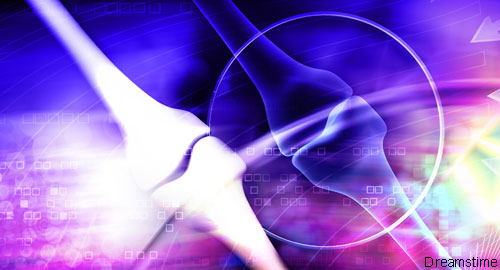 Humans and mice who have a deficiency in sclerostin present with a high-bone-mass phenotype. This finding has led pharmaceutical companies to develop several monoclonal antibodies that block sclerostin, with the hope that these antibodies will prove useful as treatments for osteoporosis. New data in mice reinforce the idea that the combination of sclerostin-neutralizing antibodies and physical activity may increase bone mass.
Humans and mice who have a deficiency in sclerostin present with a high-bone-mass phenotype. This finding has led pharmaceutical companies to develop several monoclonal antibodies that block sclerostin, with the hope that these antibodies will prove useful as treatments for osteoporosis. New data in mice reinforce the idea that the combination of sclerostin-neutralizing antibodies and physical activity may increase bone mass.
David Pflanz, a graduate student at Charite-Universitatsmedizin Berlin in Germany, and colleagues published the results of their research online Aug. 25 in Scientific Reports.1 The investigators focused their attention on mice engineered without the gene for sclerostin (i.e., Sost-knockout mice) to investigate the role of sclerostin in the structural adaptation of the tibia via surface modeling, remodeling and mechanical loading. They first examined if there were a difference in load transmission between Sost deficient mice and littermate controls.
“In this study, we examined whether in vivo tibial loading [for two weeks] could enhance bone formation and reduce bone resorption in young and adult female [Sost-knockout mice] and [littermate control] mice,” write the authors in their discussion. “We hypothesized that the bone formation and resorption response to mechanical loading is not affected by Sost deficiency, but is affected by skeletal maturation. We investigated changes in cortical bone morphology and the adaptive (re)modeling response using in vivo microCT imaging, registered microCT data as a 4D imaging biomarker of bone formation and resorption, and conventional 2D histomorphometry.”
The investigators found that, contrary to their hypothesis, the cortical adaptive response was enhanced in Sost-knockout mice compared with littermate control mice and that the knockout mice were more readily able to form cortical bone. Specifically, Sost-knockout mice had greater load-induced increases in periosteal bone formation rates and newly mineralized surface areas than did the littermate control mice. Moreover, when the researchers closely examined the dynamic microCT measures, they found the loaded limb had a significantly greater volume of newly formed bone than the control limb in both young and adult Sost-knockout mice. In contrast, only the young littermate control mice —not the old mice—had a significantly increased volume of newly formed bone in the loaded compared with the control limbs.
The researchers also found the ablation of the Wnt inhibitor Sost in the Sost-knockout mice led to increased expression of another Wnt inhibitor, Dkk1. When they looked more closely at the young Sost-knockout mice, they found that, at eight hours, the loaded limb had significantly decreased its expression of the Wnt inhibitor Dkk1 relative to the non-loaded limb.
“Our study is the first to examine the effect of mechanical loading on Wnt signaling under sclerostin ablation,” they note. These results suggest that Dkk1 plays a compensatory role in the absence of Sost.
In both Sost-knockout and littermate control mice, skeletal maturation led to increased cortical thickness, cortical area fraction and reduced bone formation in control bones. Although the authors note this change occurred with age, they did not investigate the mechanoresponsiveness of elderly Sost-knockout mice. Thus, the authors emphasize that this factor remains to be resolved, and therefore, any treatment strategy should consider the influence of age on ultimate bone mass gains.
Lara C. Pullen, PhD, is a medical writer based in the Chicago area.
Reference
- Pflanz D, Birkhold AI, Albiol L, et al. Sost deficiency led to a greater cortical bone formation response to mechanical loading and altered gene expression. Sci Rep. 2017 Aug 25;7(1):9435. doi: 10.1038/s41598-017-09653-9.